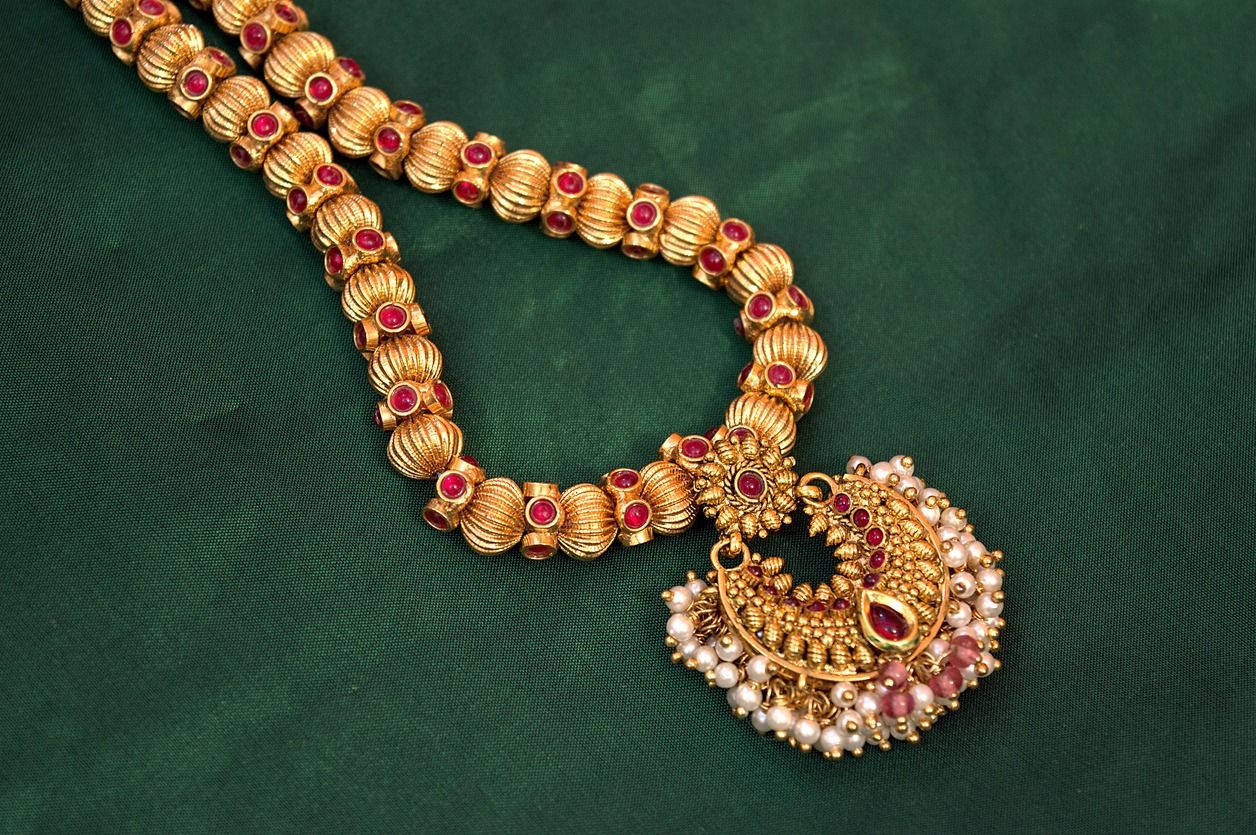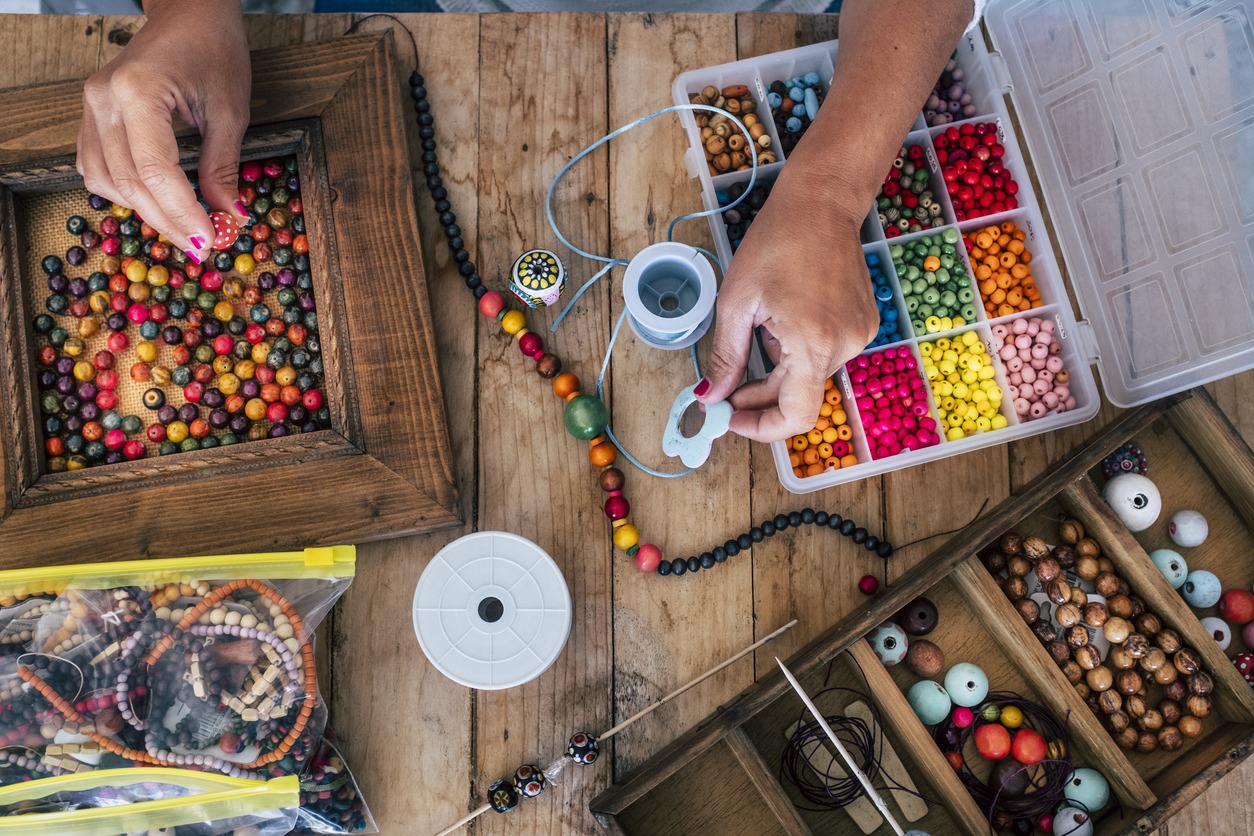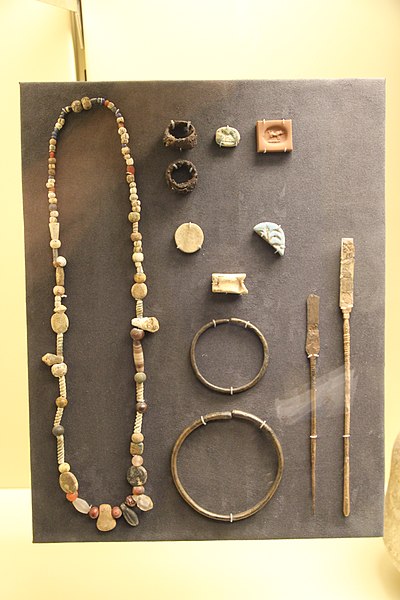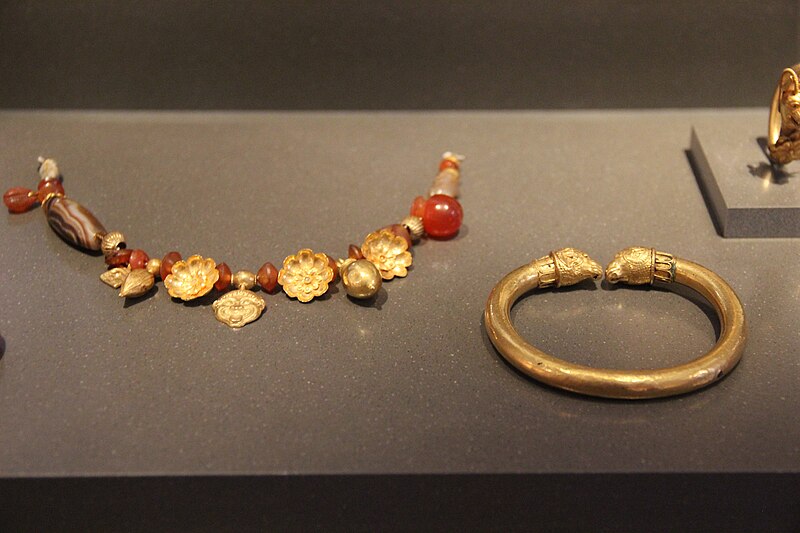Handmade jewelry is created by skilled artisans who use their hands, rather than machines, to assemble various components. While lathes and drills may be involved in the process, they are always guided by human hands. These artists use a wide range of available materials and techniques to craft unique designs. Some common materials include gemstones, specially coated wires, beads, and even threads. The jewelry often features wires delicately wrapped around gemstones.
What Makes Handmade Jewelry So Special?
Jewelry has been a cherished part of human culture for thousands of years, and its appeal endures worldwide. The sheer variety of jewelry styles developed over the centuries is truly remarkable. However, handmade jewelry holds a unique and cherished place in the hearts of jewelry enthusiasts. But why is it so beloved? The popularity and appreciation of handmade jewelry are on the rise because people recognize that it’s not just ordinary art.
First, let’s understand what “handmade” means. It’s quite self-explanatory. Handmade jewelry is crafted and assembled by hand without the use of machines. Skilled artisans design, weave, carve, solder, and assemble each piece, although some processes may involve tools. Many factors contribute to the love and importance attached to handmade jewelry, such as:
It’s meticulously made. Handmade jewelry demands a significant time investment, making it a classic choice. Crafting a single piece can take days or even months. From creating a unique design to meticulously attending to fine details, crafting handmade ornaments requires considerable effort.
It showcases art. Artists use their talent and imagination to design each piece, handpicking the raw materials needed for the design. This ensures that every component boasts outstanding quality from trusted sources.
It’s a quality accessory. Handmade jewelry guarantees unmatched quality due to its intricate, artisanal process. From selecting top-notch raw materials to crafting intricate designs with precision and pride in the final product, handmade pieces stand as a timeless standard, not just a fleeting trend.
It offers a one-of-a-kind piece. Machine-made jewelry suffers from overproduction, making it accessible to many. Handmade, on the other hand, isn’t mass-produced. Sometimes, artists create only one piece of each design, making it a rare treasure. Some artisans produce one-of-a-kind jewelry throughout their lifetime. Owning such a unique piece adds significant value and makes the owner a custodian of a signature creation.
It gives you an opportunity to buy locally. Every time you purchase handmade jewelry, you’re not just acquiring a piece; you’re supporting a local skilled artist. Crafting jewelry is often a generational talent passed down through families. Skilled artists are a rare find, and buying their art provides them with a sustainable income, fuels the local economy, and recognizes their valuable contributions.
It’s a cultural and social symbol. History is brimming with handmade jewelry pieces that serve as symbols of identity and social status. Personalized handmade jewelry provides valuable insights into the cultures of the past.
It’s made with love. Beyond the fabrics, beads, stones, thread, and other materials, there’s profound emotion attached to handcrafting with love. Handmade pieces are created passionately by individuals who love their work, crafting with unwavering dedication. They radiate the value of fine craftsmanship, delivering more than just art; they provide satisfaction and the pride of owning a unique craft.
So, how did jewelry transform from a mere accessory into an invaluable piece of art? Even our distant ancestors used shells and bones to create jewelry. Let’s delve into history to uncover the treasure trove of information about handmade jewelry.
History of Handmade Jewelry
Handmade jewelry making is an ancient craft that various cultures have practiced throughout history. It is a form of artistic expression that dates back thousands of years and has evolved significantly over time. These pieces offer insights into the myths and traditions of ancient civilizations. Here is a brief history of handmade jewelry making:
Prehistoric Times
In prehistoric times, objects such as animal teeth and shells were primarily used for adorning the body. Some may find the history and origins of handcrafted jewelry less known, but it’s actually quite fascinating.
Some of the earliest records of such jewelry were made by Neanderthals in Europe. They crafted perforated beads from sea shells and small stones, and evidence of this dates back as far as 115,000 years ago, found in the Cueva de los Aviones cave on the southeast coast of Spain. As time progressed, humans began using materials like bones and teeth to create primitive adornments for themselves and others.
Prehistoric Africans were also making jewelry way back. Some of the earliest known pieces that originated in Africa were perforated beads made from sea snails, dating back 75,000 years in Blombos Cave. In Kenya, more than 40,000 years ago, perforated ostrich eggshells were used to create numerous beads. The Cro-Magnons in other parts of the world also wore primitive bracelets and necklaces made from materials like bones, teeth, berries, mammoth tusks, and stones.
Legends suggest that in the distant past, people couldn’t safely store gems and beads as we do today, so they attached these beautiful pieces to leather straps and wore them around their necks. This practice eventually led to the development of beaded necklaces, which became a symbol of status. Beads have been crafted from various materials, including bones, glass, shells, metals, gemstones, and even wood. Initially, bead craftsmen kept their techniques secret, but during the 1800s, glass beading became widely accessible. The tradition of beaded jewelry has a captivating history indeed.
Ancient Times
Around 7,000 years ago, the use of metal in handmade jewelry began, starting with copper. One of the earliest instances of significant handmade jewelry production comes from ancient Egypt, dating back 3,000-5,000 years.
In Egyptian culture, jewelry symbolized political and religious power, primarily worn by pharaohs and the exceedingly wealthy. They even buried the wealthy with their jewelry, believing it would accompany them into the afterlife. Materials such as gold, colored glass, and semi-precious gemstones were utilized, and this era marked the start of assigning meanings to gemstone colors. The use of colors held great symbolism for the Egyptians, particularly the Pharaohs, who predominantly adorned themselves with these precious jewels. These pieces represented religion, power, wealth, spirituality, and prosperity. Silver and Lapis Lazuli had to be imported as they were not naturally occurring in Egypt.
Besides Egypt, other civilizations like China and America began to perceive jewelry more seriously. It gradually evolved into a symbol of social rank, ranging from indicators of social status due to the expense of the jewelry to religious significance.
The materials used in jewelry-making shifted from readily available natural objects, which were abundant, to rare raw materials that were costly to mine and required exceptional skill to transform into handmade jewelry.
Jewelry-making gained momentum and cultural value over time. By the seventh century, access to such adornments was restricted primarily to the wealthy. Precious metals like platinum, gold, and rare gemstones became pivotal in jewelry production.
The exceptional craftsmanship and labor invested in creating these pieces resulted in iconic jewelry that held a distinct status. This era also marked the introduction of gemstones and fake pearls.
Greece, in particular, played a significant role in jewelry-making, using gold and gems akin to the Egyptians. They were the leaders in making copper jewelry, tracing back 7,000 years, and they were pioneers in crafting gold hair ornaments. The key distinction lay in Greece’s emphasis on metalwork itself, manipulating and contorting metals to craft intricate designs on their pieces.
In ancient Greece and Rome, jewelry-making techniques included the use of filigree, granulation, and gemstone settings.
Middle Ages
During the Middle Ages, the art of jewelry-making continued to evolve. Craftsmen created intricate pieces that often featured religious symbols and motifs. Guilds of jewelers were established in Europe, and they played a significant role in preserving and passing down jewelry-making techniques.
Craftspeople who crafted handmade jewelry were seen as individual artisans, each adding their personal touch to every piece. They passed down their knowledge to apprentices, who further honed their skills in crafting handmade jewelry.
Throughout history, jewelry has served various purposes. It adorned royalty and the wealthy, but it was also crafted by others and used for barter in the trading of goods, spanning from ancient Rome well into the Middle Ages. During that time, jewelry in the Roman Empire was a symbol of status worn by royalty and the affluent. It also served as a means of trade.
Medieval jewelry reflected a society highly conscious of status. Royals and nobles favored precious gems, silver, and gold, while those of lower ranks wore metals like pewter and copper. By the late 14th century, gemstones were not only cut but also polished, with gem size determining their value.
By the 17th century, jewelry primarily served as an adornment for the body, but this decorative function was only accessible to a select few, the very wealthy. Precious metals like platinum and gold, along with rare gemstones like emeralds, diamonds, and rubies, held significant importance in jewelry making. The more challenging and expensive it was to acquire and work with these materials, the more exquisite the resulting jewelry. The craftsmanship and individual touches contributed greatly to the beauty of each piece.
As the jewelry market expanded, the concept of fake pearls and gems emerged as early as the 1670s. Jewelry made from a compound known as “paste,” consisting of glass with white lead oxide and potash, gained popularity. This jewelry was worn during the day and even in court, making it fashionable to wear ‘pearl’ jewelry abundantly.
Victorian Era
The Victorian era brought about a resurgence of sentimental jewelry, with pieces designed to convey emotions and messages through gemstones, lockets, and cameos. Queen Victoria’s love of jewelry, especially mourning jewelry, influenced popular styles of the time.
Around the Victorian era, coinciding with the Industrial Revolution, manufacturing processes were developed for mass-producing jewelry. This significantly reduced the cost of jewelry production, making it accessible to a wider portion of society. Consequently, jewelry’s role as a status symbol diminished, and it evolved into more of a fashion statement. However, the allure and quality of jewelry also declined as mass production stripped away much of the uniqueness found in handmade pieces.
Arts and Crafts Movement
In the late 19th and early 20th centuries, the Arts and Crafts movement promoted the creation of handmade items, including jewelry. Artisans focused on traditional craftsmanship and the use of natural materials, such as semi-precious gemstones and hand-hammered metals.
Jewelry makers were particularly drawn to this philosophy, as they aimed to create pieces that were not only beautiful but also reflective of the artisan’s mastery of their craft. They often worked with materials like semi-precious gemstones, sterling silver, copper, and brass. These materials were chosen for their inherent beauty and durability.
Hand-hammering was a distinctive technique associated with Arts and Crafts jewelry. Artisans would shape and texture metals like copper and silver by hand, creating unique and intricate designs. The texture achieved through hand-hammering added depth and character to jewelry pieces, making them stand out from mass-produced alternatives.
Contemporary Handmade Jewelry
Today, handmade jewelry continues to thrive as a form of artistic expression. Jewelry makers use a wide range of materials, including precious and semi-precious stones, metals, glass, ceramics, and more. Many artists draw inspiration from various cultural traditions and contemporary design trends, resulting in a diverse array of styles and techniques.
Modern technology has also influenced the craft of jewelry making with advancements in tools, equipment, and materials. However, the tradition of handmade jewelry remains vibrant, allowing artisans to create unique and personalized pieces that reflect their creativity and craftsmanship. It embodies a precious and unique creation, whether crafted from pure gold or recycled materials, preserving the character and individuality absent in mass-produced items.
To this day, many artisans uphold the tradition of handmade jewelry, whether crafting simple twisted wire pieces or elaborate creations adorned with gems, pearls, glass beads, and stones. This time-honored trade has survived for centuries and continues to evolve as life progresses.



